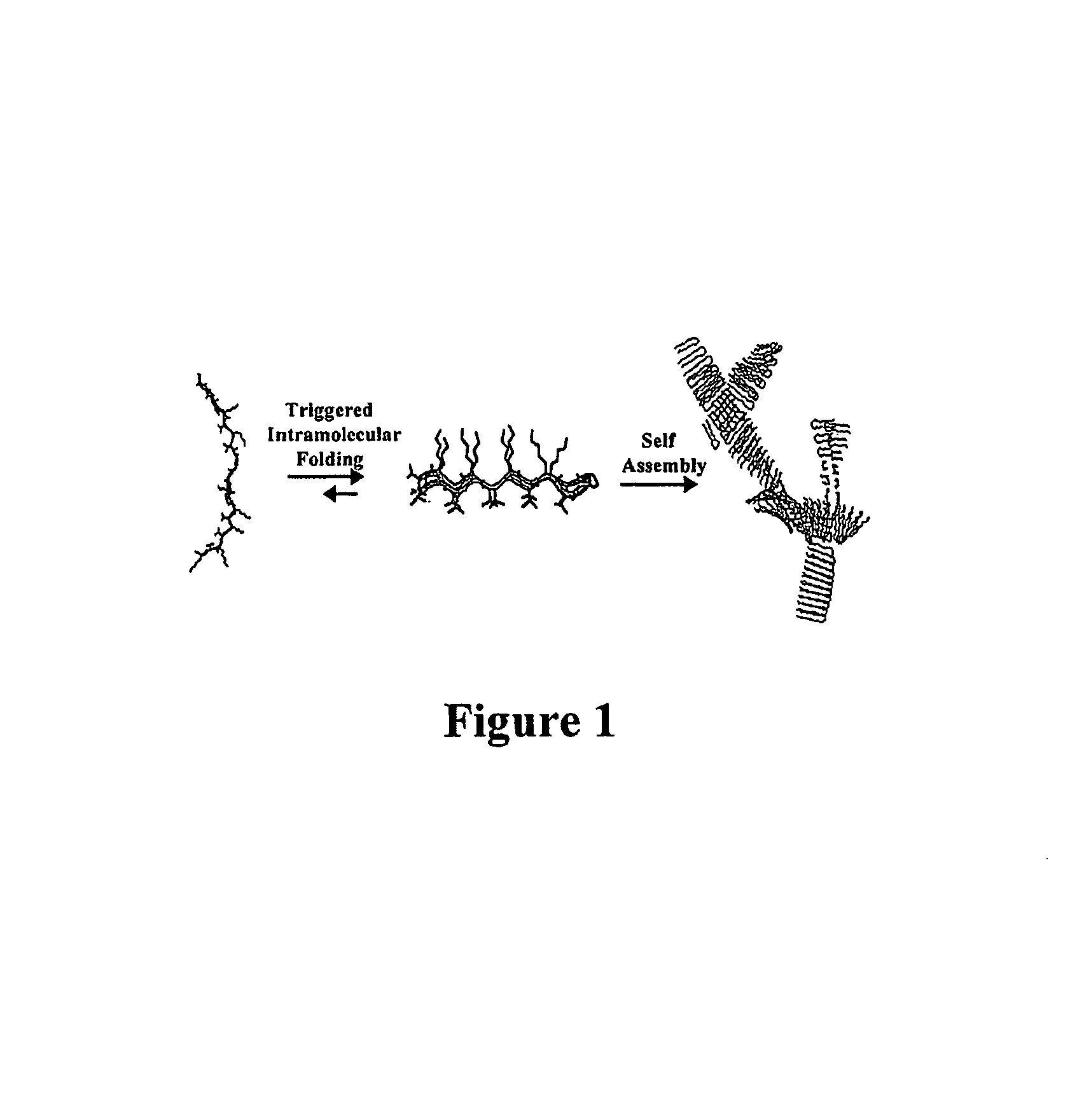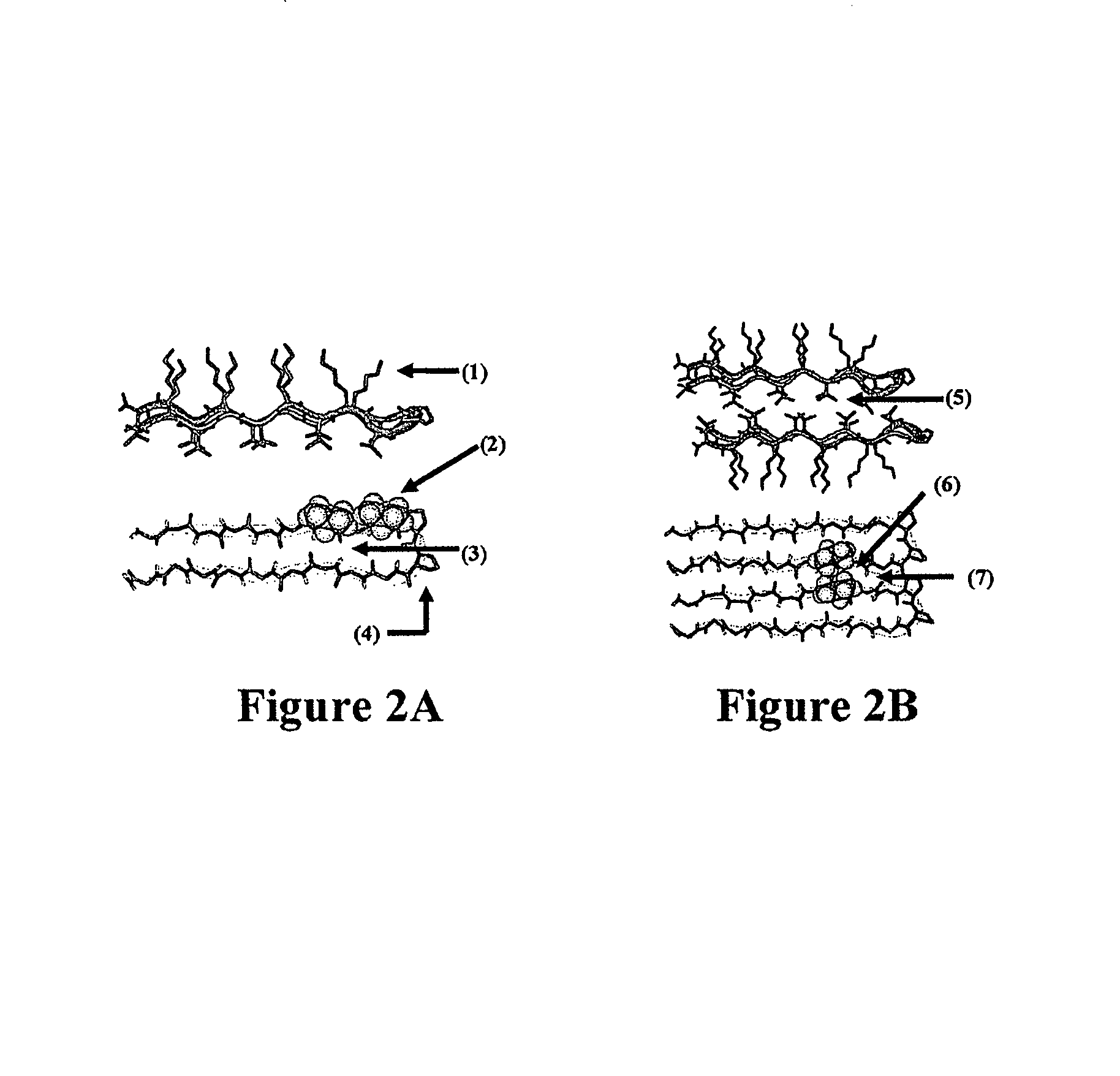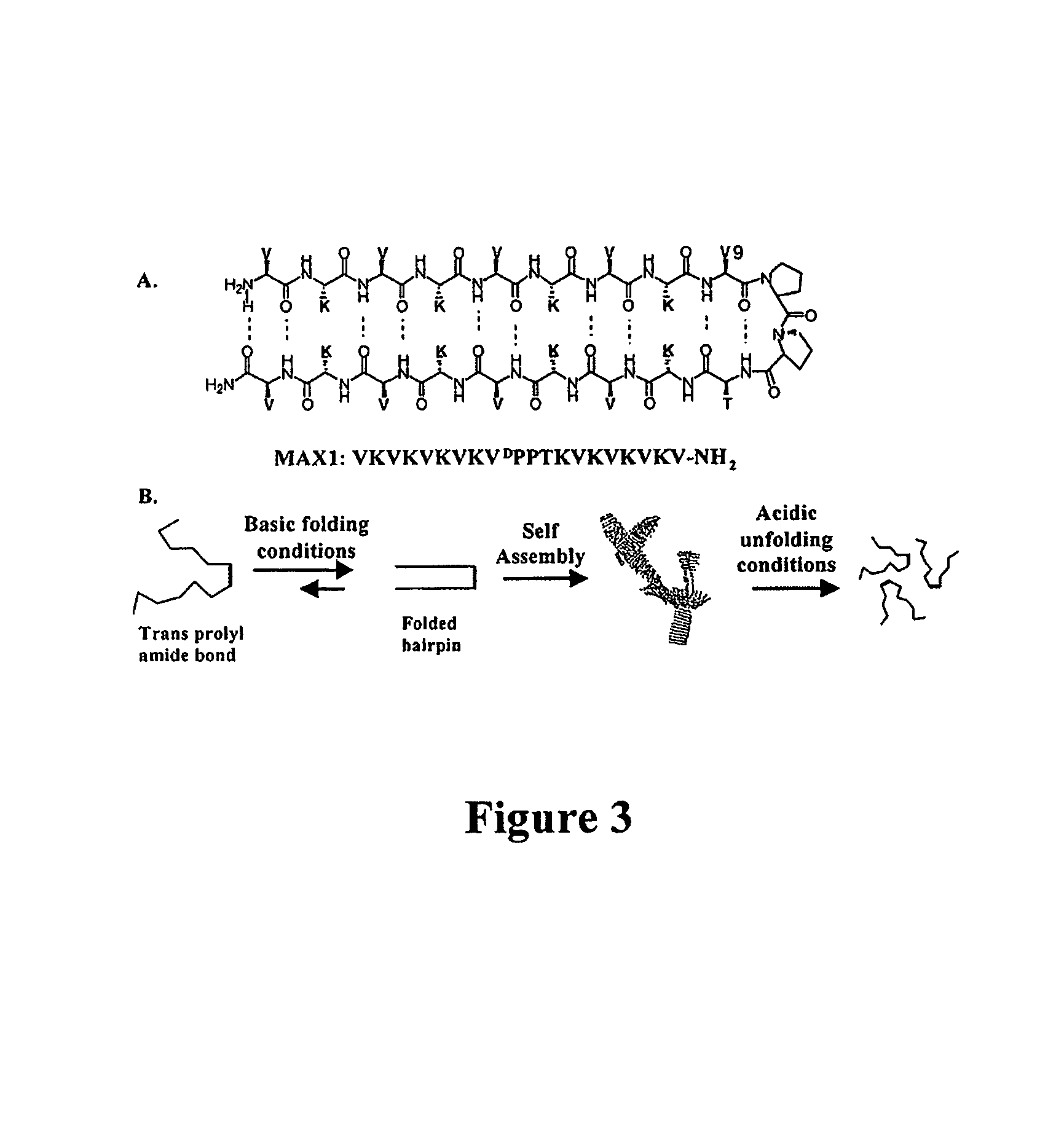Hydrogels and uses thereof
a technology of hydrogels and gels, applied in the field of hydrogels and uses thereof, can solve the problems of difficult comprehensively achieving desired material properties, difficult to achieve biocompatible materials, and mechanical rigidity of well hydrated materials, so as to promote adhesion and proliferation, and rapid isolation of compounds
- Summary
- Abstract
- Description
- Claims
- Application Information
AI Technical Summary
Benefits of technology
Problems solved by technology
Method used
Image
Examples
example 1
[0159]Intramolecular folding events, triggered by the presence of salt, induce the self-assembly of β-hairpin peptides into hydrogel networks at physiological conditions. At pH 7.4, low ionic strength solution conditions, dilute, homogeneous solutions of peptide (≦2 wt. %) exhibit the viscosity of pure water. Circular dichroism spectroscopy shows that at pH 7.4 in the absence of salt, peptides are unfolded. By raising the ionic strength of solution, electrostatic interactions between charged amino acids within the peptide are screened and a β-hairpin conformation is adopted. Folded β-hairpin molecules supramolecularly assemble via hydrophobic collapse and hydrogen bonding into a three dimensional hydrogel network. FTIR and x-ray scattering data demonstrate that these hydrogels are rich in β-sheet. Dynamic oscillatory rheological measurements demonstrate that the resultant supramolecular structure forms an elastic material whose structure, and thus modulus, can be tuned by salt conce...
example 2
Encapsulation of Mesenchymal Stem Cell Line C3H10t1 / 2
[0183]To a vial containing 2 mg HPL8 (VKVKVKVKVDPPTKVEVKVKV-NH2), 90 μL of distilled water at ˜25° C. was added and transferred to an 8 chamber confocal plate at which time 90 μL of 2×DMEM was added and gently pipetted to ensure a homogeneous solution optimal for cell encapsulation. Immediately, 20 μL of a 100,000 cells / mL stock solution in DMEM (serum free) was added to the DMEM / HPL8 mixture and gently mixed to ensure homogeneity, resulting in a 1 wt % HPL8 hydrogel containing 20,000 cells. The hydrogel was incubated for 15 minutes at 37° C. and 5% CO2 to ensure a self-sustaining material. After which time, 400 μL of DMEM containing 10% FBS was added to the top of the hydrogel allowing for diffusion of nutrients (media was refreshed after 24 hours).
[0184]Live / Dead Assay of Encapsulated C3H10t1 / 2 Cells
[0185]At 48 hours the media was removed from the hydrogel and washed with DMEM (400 μL). A stock solution of 1 μM calcein AM and 2 ...
example 3
[0186]A peptide-based hydrogelation strategy has been developed that allows homogenous encapsulation and subsequent delivery of cells, e.g., C3H10t1 / 2 mesenchymal stem cells. HPL8, a twenty residue peptide, folds and self-assembles in response to DMEM cell culture media affording mechanically rigid hydrogels. Structure-based peptide design was used to modulate the gelation kinetics of MAX1, the parent peptide, affording HPL8. When HPL8 hydrogelation is triggered in the presence of cells, the tuned self-assembly kinetics ensures that gels become homogeneously impregnated with cells. A unique characteristic of these constructs is that when an appropriate shear stress is applied, the gel will shear-thin, becoming a viscous liquid. However, after the application of shear has stopped, the viscous liquid quickly self-heals producing a gel with mechanical rigidity nearly identical to the original hydrogel. This property allows gel / cell constructs to be delivered via syringe with precision ...
PUM
| Property | Measurement | Unit |
|---|---|---|
| pH | aaaaa | aaaaa |
| pH | aaaaa | aaaaa |
| pH | aaaaa | aaaaa |
Abstract
Description
Claims
Application Information
 Login to View More
Login to View More - R&D
- Intellectual Property
- Life Sciences
- Materials
- Tech Scout
- Unparalleled Data Quality
- Higher Quality Content
- 60% Fewer Hallucinations
Browse by: Latest US Patents, China's latest patents, Technical Efficacy Thesaurus, Application Domain, Technology Topic, Popular Technical Reports.
© 2025 PatSnap. All rights reserved.Legal|Privacy policy|Modern Slavery Act Transparency Statement|Sitemap|About US| Contact US: help@patsnap.com



